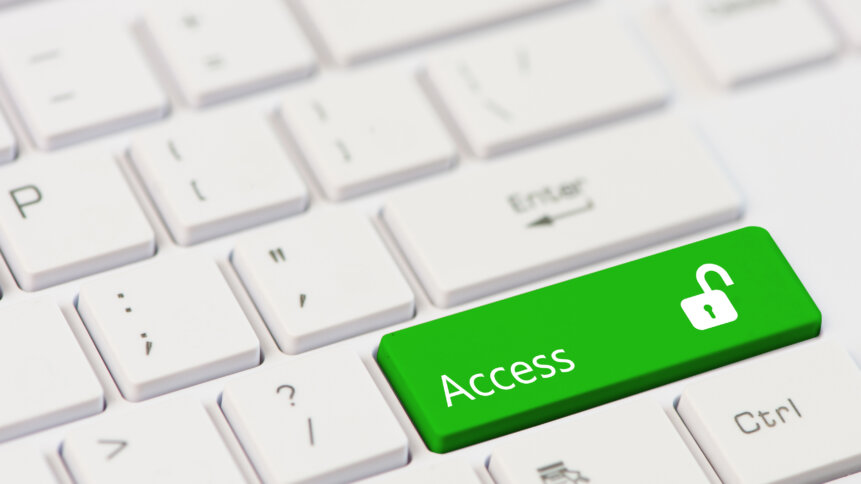Good business will be accessible by all – at least online

Web accessibility should be at the forefront of architects’ minds when designing and building a website. It’s essential for developers and organizations that want to create high-quality websites and web tools; the benefit of reaching as wide a user audience as possible are obvious.
The inventor of the world wide web and Director of W3C, Tim Berners-Lee, said that “the power of the web is in its universality. Access by everyone, regardless of disability, is an essential aspect.”The web should be somewhere that boundaries to equal access don’t exist.”
Further, although it shouldn’t be a necessary motivator, good accessibility benefits non-disabled people too. For example, accessibility needs change across mobile phones, smart watches and smart TVs, each having different input modes.
Older people also benefit from many of the same features that enable users with disabilities to navigate technology, as can those who are “temporarily disabled” by something like a broken arm. “Situational limitations,” like bright sunlight or an environment that doesn’t allow for audio to be played, are also mitigated by accessible design.
What does web accessibility mean?
Making the web accessible to everyone means ensuring websites, tools, and technologies are designed and developed so they can be used by anyone. People should be able to perceive, understand, navigate, interact with and contribute to the web.
This encompasses anything that would impede access, including challenges in:
- Auditory
- Cognitive
- Neurological
- Physical
- Speech
- and visual areas.
A video on modes of accessibility is available here.
As the web has long reached its point of absolute necessity as a resource, it’s essential that it be accessible to provide equal access and opportunity to people with diverse disabilities. It’s defined as a basic human right to have access to information and communications technologies, including the web, by the United Nations Convention of the Rights of Persons with Disabilities.
In many situations, web accessibility is required by law. If nothing else, the risk of being sued for a lack of accessibility — or an expensive PR nightmare — should worry businesses enough to maintain interfaces that can be used by everyone.
One of the powers of the web is its ability to overcome the barriers that exist with print, audio, and visual media. For businesses, the case for accessibility is clear: it improves overall user experience and satisfaction, especially in a variety of situations, across different devices, and for older users. As such, accessibility can enhance your brand, drive innovation, and extend your market reach.
How to make the web more accessible
The first step to making your web design accessible is to include accessibility from the beginning of your design process. Even though many accessibility solutions are easy to understand and implement, there are more complex necessities, too, and applying them after the original build only makes them harder.
Accessibility is dependent on several components working together, including web technologies, browsers and any other “user agents,” authoring tools, and websites. An example of a simple way to make a website more accessible is by providing alternative descriptions for any image that conveys meaning. Hide any images that are purely decorative from assistive technologies.
W3C’s tips for getting started can be found here.
Building apps for accessibility
Every reason that web accessibility can benefit a business also applies to app development. In Apple’s guide to app development, accessibility is included in the best practices. It means prioritizing simplicity and perceivability, making design choices that ensure no exclusion.
Beyond this, apps should allow for personalization — this shouldn’t be difficult as most are already programmed to adjust to factors like screen orientation and the brightness of a user’s environment. Again, even though accessibility should be a priority for the sake of disabled peoples’ equal access, it also benefits people without disabilities.
Assistive technologies like VoiceOver and accessibility features like display accommodations expand the variety of ways people can interact with their devices. It’s recommended that apps don’t interrupt or override platform gestures (like swiping down on an iPhone to view notifications) because people expect those to work regardless of which platform is open.
Overall, common interactions should use the simplest gestures possible, and alternative ways for performing gesture-based actions should be provided for those that might not be able to perform a specific gesture. When possible, the app’s core functionality should be accessible through more than one type of interaction.
Another tip is making hit targets at least 44x 44 pt, and using a consistent style hierarchy so the importance of buttons can be understood by assistive technologies.
If you’re still struggling with the easy ways – and the more fundamental design philosophies – that can make your website, platform or app more generally accessible, you can find more tips from Apple here.








